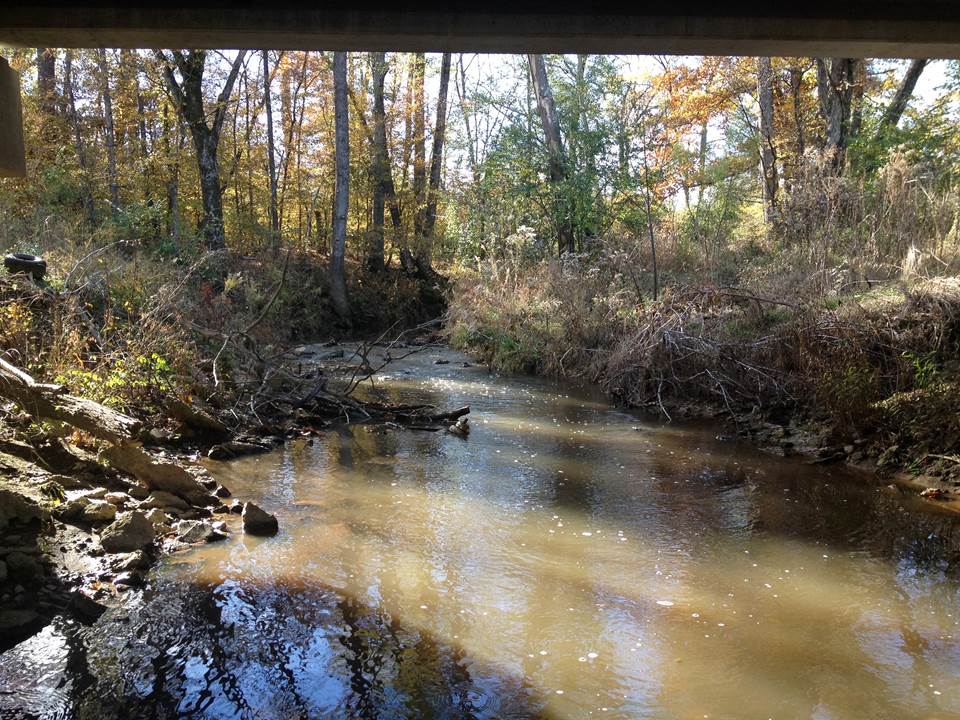TWRI staff install a water quality sampler station for this research project in 2017. (Photo courtesy of Lucas Gregory, TWRI.)
Do best management practices actually work? Sure, they sound nice, but can small land management changes really improve waterways for everyone?
Yes, says recently published research co-authored by the Texas Water Resources Institute’s Lucas Gregory, Ph.D., Jason Gerlich, Ed Rhodes and Stephanie deVilleneuve, with the Oklahoma Water Resources Center’s Kevin Wagner, Ph.D..
Titled Edge-of-Field Runoff Analysis Following Grazing and Silvicultural Best Management Practices in Northeast Texas, the study aims to quantify how best management practices (BMPs) impact water quality.
These results, taken from two years of data collection and analysis, show how small changes can add up. The research could help future decision-making when choosing land management practices in similar regions.
How much can BMPs help?
The project started with the Natural Resources Conservation Service (NRCS) and their National Water Quality Initiative, Gregory said. In this initiative, NRCS chooses small areas of interest where voluntary conservation practices could make a critical difference in water quality and then helps agricultural producers implement a critical mass of those BMPs.
In 2016, NRCS identified the Lake O’ the Pines watershed, part of Big Cypress Bayou, as an area for implementing the initiative’s BMPs. In cooperation with NRCS and willing landowners, TWRI set up sampling equipment to monitor impacts on local water quality.
“They picked out three sub-basins within Lake O’ the Pines watershed and prioritized those for BMP implementation,” he said. “One of the big things that they need to prove or show through these efforts are water quality improvements.”
Funded by the Texas State Soil and Water Conservation Board (TSSWCB), using a U.S. Environmental Protection Agency Clean Water Act Nonpoint Source Grant, TWRI began a multi-year water quality monitoring project that sampled both edge-of-farm and edge-of-field runoff from eight specific pastures.
The samples were collected using auto-samplers, and then taken to a lab and tested for nutrient, sediment, and bacteria concentrations, along with measuring the amount of water coming off the fields.

“Whenever rain and runoff occurred, that water would be routed to autosamplers," Gregory said. "These devices were set up to constantly monitor water levels. Once the water reached a certain point, our samplers would start sampling.”
Sampler stations were installed on designated fields, edges of farms and within the creek network flowing out of the three watersheds.
Comparing runoff at four ag operations
The paper compared four ag operations: a control farm where the operators did not implement BMPs, another cattle ranch using BMPs, a pine plantation, and a site that had been clear-cut and was being allowed to grow back naturally. The researchers used water quality data from the four sites to compare how BMPs impacted the areas.
“The point of the paper is to see how these BMPs performed at reducing nutrient, bacteria, and sediment loads,” Gregory said.
Unfortunately, in 2018, funding for the BMP implementation project ended three years earlier than planned due to the lower-than-desired level of producer participation in the watershed. Without funding, TWRI stopped monitoring.
However, the runoff data collected still held significant information.
The data showed that prescribed grazing effectively reduced nutrient runoff, showing that grazing BMPs can be an effective tool for rapidly improving water quality, the researchers said.
“We did see, with some level of statistical significance, that some of these water quality parameters did improve in that 2-year period,” Gerlich explained. “We were able to reduce the loading of several of these nutrients and bacteria throughout these watersheds with the prescribed grazing.”
Comparatively, continuously grazed sites monitored in the study lost 24% more nutrients than rotationally grazed sites, despite receiving less total rainfall, they said.
The pine plantation site did not see similar data, Gerlich said, because silvicultural BMPs require a longer term than two years to produce results, due to the time it takes for vegetation to fully establish.
While the project might not have run for as long as planned, the positive results matter, no matter how small, Gregory and Gerlich said. Data like this can be plugged into watershed scale models to help researchers produce more accurate predictions and studies. It can also help stakeholders make more informed decisions addressing problems in their watersheds.
“Despite some of the complications with the project, this research did further prove that these BMPs can be effective short-term,” Gerlich said. “We hope this will impact producers’ and stakeholders’ choices going forward.”


